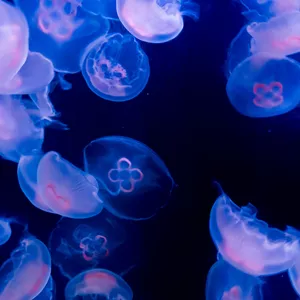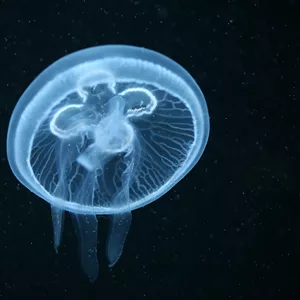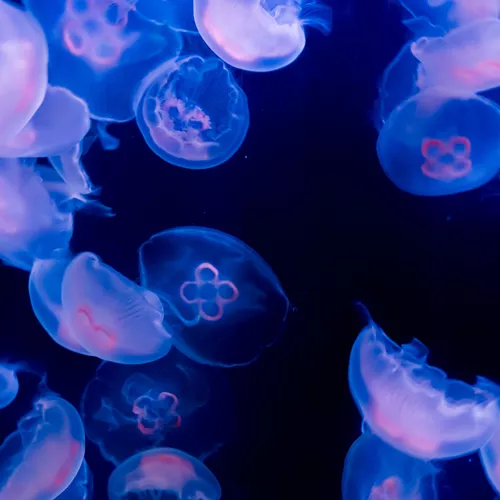Moon jelly
What are jellyfish and where do they occur?
Jellyfish denote a life stage of cnidarians and are also called medusas (singular: Medusa) in science. They are older than all our prehistoric reptiles. Scientists believe that they were already floating through our oceans 500 million years ago. From a few millimetres to several metres, jellyfish can be found in all sizes. They have no brain and are 98% water.
Jellyfish are found in all the world's oceans - but the colder the zone, the less species diversity there is. The most common is the jellyfish, which is also found off the German North Sea and Baltic coasts.
Jellyfish have poisonous tentacles with which they catch their prey. Most jellyfish are harmless to humans. However, some species - such as the dice jellyfish - can cause nasty and painful stings and, with their strong poison, even become dangerous to humans. Jellyfish also use their tentacles to defend themselves or protect their offspring.
SEA LIFE shows you jellyfish in a completely new light. So that our jellyfish cannot hurt themselves on hard objects, their tanks are round. The animals move forward by contracting their umbrellas and with the help of currents and tides. In the SEA LIFE tanks we have imitated this so that the jellyfish feel like they are in the ocean.
A special jellyfish species, the cube jellyfish (sea wasp), kills more people every year than any other sea dweller.
Jellyfish have been around for more than 650 million years and can be found in all oceans. This means that they have lived on this planet since before dinosaurs and sharks.
What should I do if I touch a jellyfish?
If you have been burned by a jellyfish while bathing, the easiest way to soothe the irritation is to use household vinegar: just apply it on the spot and rub it gently with sand. Alcohol and fresh water should be avoided at all costs, as this can cause more nettle cells to burst and the injury to get worse. If possible, do not touch stranded jellyfish, as the nettle cells can still secrete poison.


